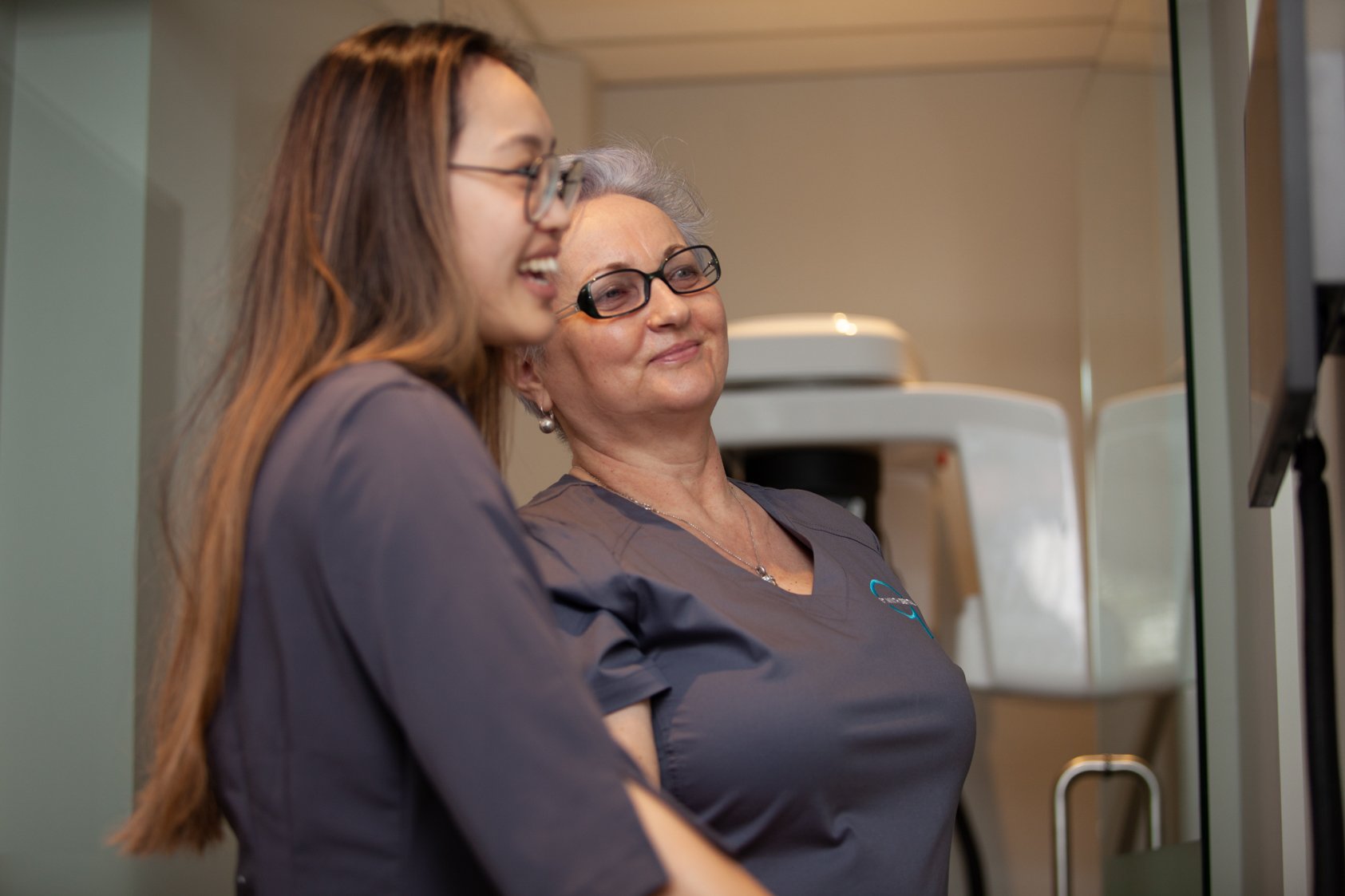
Preventative
Dental Exams
A dental exam is a routine checkup conducted by a dentist to assess and maintain oral health.
During the exam, the dentist examines the teeth, gums and mouth for issues such as cavities, gum disease and other dental problems. The process typically involves a thorough visual inspection, the use of dental instruments for probing and examining the teeth and may include X-rays for a more detailed assessment.
The dentist also checks for signs of oral cancer and evaluates the bite and jaw function.
Additionally, oral hygiene practices and preventive measures are discussed and recommendations for further treatments or follow-up appointments may be provided.
Regular dental exams are crucial for early detection and prevention of dental issues.
Dental Cleanings
Dental cleanings are routine procedures performed by dental hygienists to maintain optimal oral health.
During a cleaning the hygienist removes plaque and tartar buildup from the teeth and gums using specialized tools. The process involves scaling to scrape off deposits, followed by polishing to smooth the tooth surfaces.
Dental cleanings help prevent cavities, gum disease and bad breath.
They are typically accompanied by oral hygiene education, including guidance on proper brushing and flossing techniques.
Regular dental cleanings, recommended every 6 months, contribute to the overall health of teeth and gums and aid in the early detection of dental issues.

Digital Xrays
Digital dental X-rays, also known as digital radiographs, are modern imaging techniques used in dentistry for diagnostic purposes. Unlike traditional film-based X-rays, digital X-rays use electronic sensors to capture and store images of the teeth and surrounding structures. The process involves placing a sensor or digital detector in the mouth to capture the X-ray images, which are then instantly transmitted to a computer for viewing.
Teeth Scanning & Intraoral Photos
Teeth scanning, often referred to as intraoral scanning, is a modern dental technology used to create detailed digital impressions of a patient's teeth and oral structures. Instead of traditional impression materials, such as molds or putty, intraoral scanners utilize advanced optical systems to capture three-dimensional images of the teeth and gums.
Oral Cancer Screening (Velescope) & Biopsy
Oral cancer screening is an essential component of preventive dental care, contributing to the early detection and timely intervention of oral cancers. Regular screenings are part of a comprehensive oral health strategy aimed at promoting overall well-being.
Risk Factors
Dentists consider various risk factors for oral cancer, including tobacco and alcohol use, prolonged sun exposure, human papillomavirus (HPV) infection and a history of oral cancer.
Patient History
Obtaining a comprehensive patient history is essential in identifying potential risk factors and understanding any symptoms or concerns the patient may have related to their oral health.
Biopsy for Confirmation
If suspicious lesions or abnormalities are identified during the screening, a biopsy may be recommended to confirm whether the tissue is cancerous or precancerous.
TMD / Clenching / Grinding & Night Guards
Temporomandibular disorders (TMDs) are a group of 30+ conditions that cause pain and dysfunction in the jaw joint and muscles that control jaw movement. The Temporomandibular Joint (TMJ) refers to the joint that connects your jawbone to your skull, allowing you to open and close your mouth.
Symptoms of TMD
Common symptoms of TMD include jaw pain, clicking or popping sounds when opening or closing the mouth, headaches, earaches, facial pain and difficulty chewing or discomfort while biting.
Causes of TMD
TMD can have various causes, including jaw injuries, arthritis, teeth grinding (bruxism), misalignment of the teeth or jaw, stress and excessive gum chewing.
Diagnosis
Diagnosis of TMD involves a comprehensive examination by a dentist or oral health professional. This may include a review of medical history, imaging (X-rays, MRI) and assessment of jaw movement.
Treatment Options
Treatment for TMD depends on the underlying cause and severity of symptoms. Common approaches include lifestyle changes, stress management, physical therapy, medications for pain relief, bite guards or splints and, in severe cases, surgical intervention.
Lifestyle Modifications
Patients with TMD may benefit from lifestyle modifications such as avoiding hard or chewy foods, practicing relaxation techniques to reduce stress and maintaining good posture.
Anxiety Management – Sedation
Anxiety management with sedation involves the use of sedative medications to help individuals relax and alleviate anxiety during medical or dental procedures.
Purpose
The primary purpose of anxiety management with sedation is to create a calm and relaxed state in individuals undergoing medical or dental procedures, especially those who experience significant anxiety or fear.
Types of Sedation
Various levels of sedation can be employed, ranging from mild sedation (minimal relaxation) to deep sedation (almost unconsciousness). Common types include oral sedation (pills), intravenous (IV) sedation and inhalation sedation (nitrous oxide or "laughing gas").
Conditions Treated
Sedation is often used for procedures that may cause discomfort or anxiety, such as dental treatments, minor surgeries or medical diagnostic tests.
Benefits
Sedation can enhance patient comfort by reducing anxiety and discomfort during procedures. It can also help individuals with a strong fear of medical or dental settings to undergo necessary treatments.
Monitoring
Patients undergoing sedation are closely monitored by healthcare professionals to ensure their safety. Vital signs such as heart rate, blood pressure and oxygen levels are frequently checked.
Recovery
After the procedure, patients may require some time to recover from the effects of sedation. Recovery times vary depending on the type and depth of sedation used.
Informed Consent
Before undergoing sedation, individuals are provided with information about the procedure, potential risks, benefits and alternatives. Informed consent is obtained to ensure that the patient is aware and agrees to the sedation approach.
Anxiety management with sedation is a valuable tool in healthcare, enabling individuals to receive necessary treatments with reduced stress and discomfort. It is essential for patients to communicate openly with healthcare providers about their anxiety levels and medical history to ensure the safest and most effective use of sedation.
